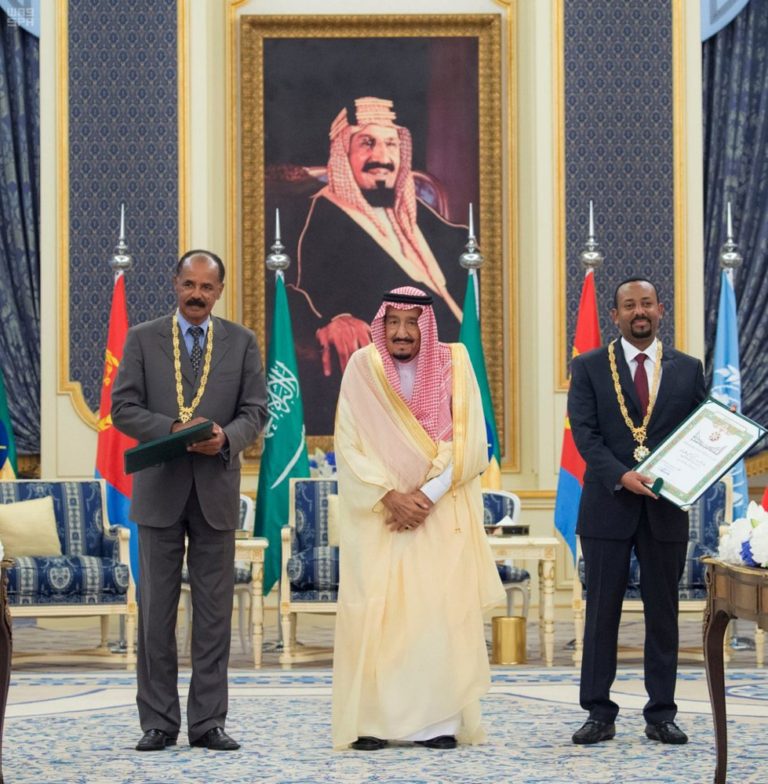Ethiopia’s $4-billion dollar Grand Ethiopian Renaissance Dam, which is expected to generate a colossal 6,000 megawatts of electricity upon completion. Photo courtesy of Getty Images (via The National).
After two days of negotiation hosted in Washington, the U.S. Treasury Department released an official statement acknowledging the progress made by the technical and legal teams from Ethiopia, Egypt, and Sudan towards a final agreement on the near-complete Grand Ethiopian Renaissance Dam (GERD). Egyptian Minister of Foreign Affairs Sameh Shoukry anticipates an equitable final draft to be proposed by the U.S. later this week. Despite recent optimism, the years of stalled talks and escalating tensions foreshadow further and graver problems awaiting Egypt and its hegemony over the Nile River.
Following the decolonization of Africa, the 1929 Anglo-Egyptian Treaty and a subsequent 1959 treaty allocated 90 percent of the river’s waters to Egypt and Sudan. Countries that have since gained independence claim that since they were colonies, they cannot recognize the agreements. The Nile Basin Initiative (NBI) was established in 1999 composed of 10 Nile River Basin countries including Egypt. It hoped to replace the current inequity and serve as a pathway to transnational cooperation. However, attempts by the NBI to diplomatically resolve conflicts over the Nile have reached an impasse. In response to a 2010 agreement that would allow other NBI members to utilize the Nile River without Egypt’s consent, the Egyptian government froze its membership. As long as Egypt continues to support these colonial-era accords and refuse to concede its “ownership” of the Nile, further conflict with Ethiopia and other upriver nations can be expected.
There is also the deep historical and cultural connection between the river and the Egyptian people. However, political and economic strains have exasperated this connection into a lifeline: 90 percent of the country is dependent on the river for their water needs, half of the country’s 101 million people reside in the river basin, and agriculture makes up 12 percent of the overall GDP. Even if Egypt is able to retain the generous allocations of the earlier treaties, the population of Egypt has quadrupled since 1960 and already suffers from one of the lowest per capita shares of water in the world. This is also despite Egypt already receiving 55 billion of the 88 billion cubic meters of water that flows from the Nile. While in the past, Egypt has reaped the benefits of its unique position at the end of the river. Today, their location makes them especially vulnerable to threats against their water and livelihood.
The introduction of Chinese investment and capital has also been a direct challenge to the region’s status quo and Egyptian hydro-hegemony. Sinohydro, a Chinese hydropower construction company, was central to Sudan’s $1.8 billion Merowe Dam. While in Uganda, the POWERCHINA International Group Limited has recently applied to construct a new $1.4 billion dollar hydroelectric dam. These large-scale dam and irrigation projects threaten to exacerbate the ecological instability along the river, but they also show Beijing’s growing influence in all of Africa. Amidst uncertainty concerning America’s military commitment to Africa, how much of the U.S.’s decision to mediate this conflict is a response to China? The recent negotiations coincided with U.S. Secretary of State Mike Pompeo’s first visit to Africa, a visit that included Ethiopia. America’s influence still lags far behind on the continent, as China continues to pass it as the land of opportunity.
While fears of violent conflict or even war between Egypt and Ethiopia may have been averted recently, there doesn’t seem to be any indication of a long term solution to the Nile’s future.

